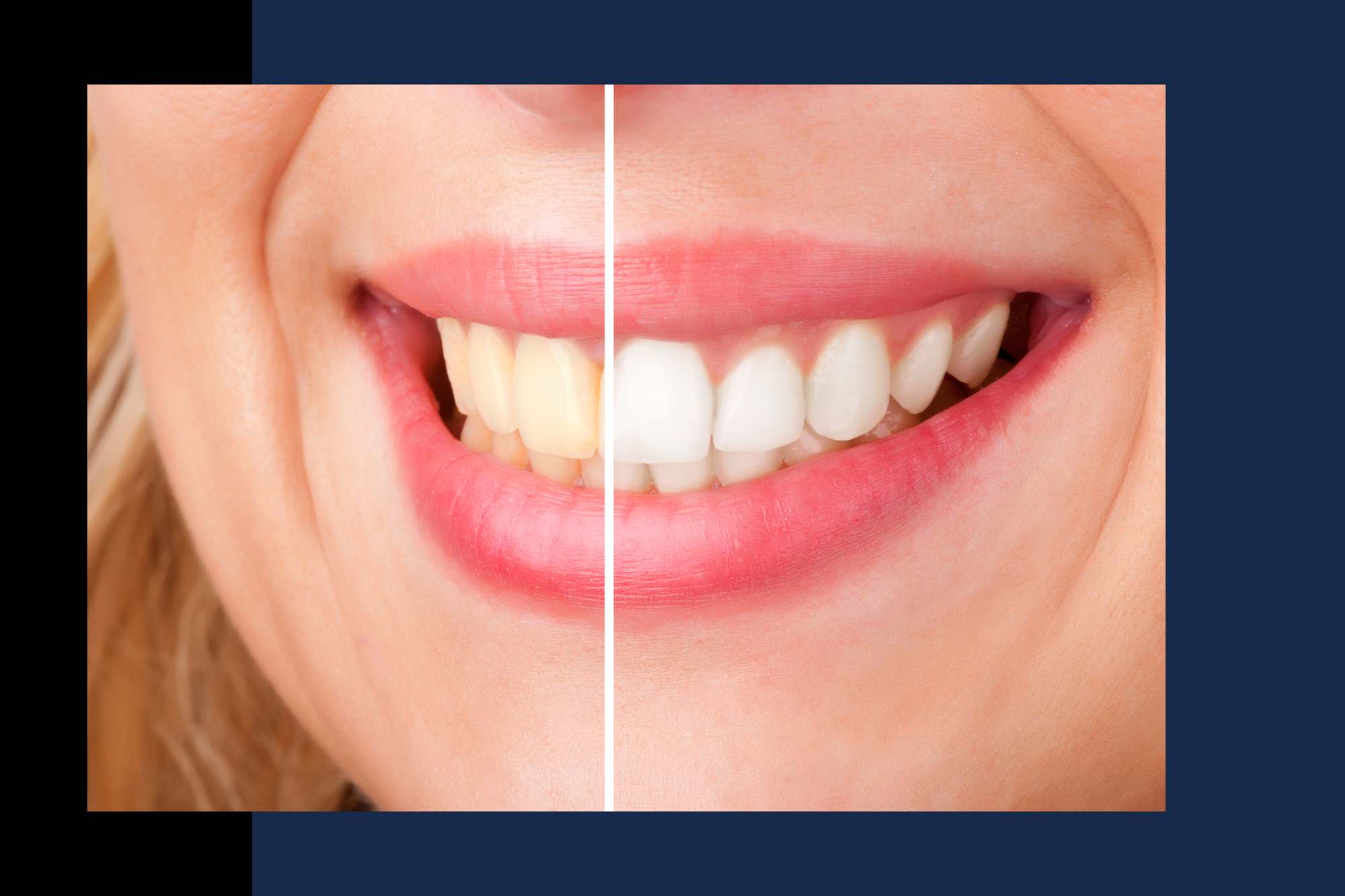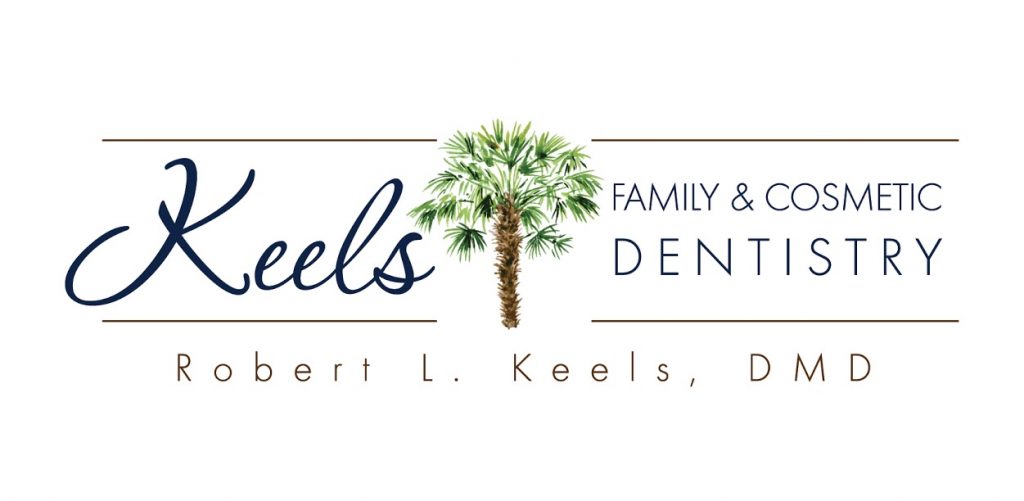SCHEDULE AN APPOINTMENT!
We all know the feeling we get when we look in the mirror and catch a glimpse of our pearly whites. As much as you’d like to show off your dazzling smile, it’s easy to be self-conscious about stained or discolored teeth. It might feel like without expensive treatments, there’s little you can do about it — but that isn’t true anymore!
Teeth whitening technology has come a long way, and now just about anyone can have the bright white smile they’ve always wanted with lower costs and minimal effort.
At Keels Family & Cosmetic Dentistry, our teeth whitening services are designed to help you achieve a brighter, whiter smile. Our experienced dental professionals will provide a comprehensive examination and assessment before recommending the appropriate treatment for your needs. We understand that teeth whitening can be intimidating for many patients, so we strive to make it as comfortable and easy as possible.
We provide various solutions tailored to each patient’s dental needs so you can achieve the smile you’ve always wanted. Our team also takes the time to educate our patients on proper aftercare and maintenance for their whitened teeth, ensuring long-lasting results with minimal effort.
With Keels Family & Cosmetic Dentistry, you can trust that you are receiving the best care and treatment for your dental needs. Visit us today and let our compassionate team help you achieve a brighter, whiter smile!
Options for Teeth Whitening
If you’re looking to brighten up your smile, teeth whitening is a go-to cosmetic dental procedure. It’s all about lightening the color of your teeth and getting rid of any pesky stains or discoloration. You’ve got lots of choices, from over-the-counter products to fancy treatments done by a dentist.
Here are some common options:
- Over-the-Counter Whitening Products: These are readily available at drugstores or supermarkets and include whitening toothpaste, whitening strips, gels, and rinses. They usually contain milder whitening agents than professional treatments and may take longer to achieve noticeable results.
- Whitening Toothpaste: Whitening toothpaste contains mild abrasives and chemical agents that help remove surface stains. They can be used as a part of your daily oral hygiene routine.
- Whitening Strips: These are thin, flexible strips coated with a peroxide-based gel. Applying them to your teeth allows the gel to work on the surface stains. The strips are usually worn for a specified amount daily over a few weeks.
- Whitening Gels and Trays: Whitening gels can be applied to your teeth using a custom-fitted tray. Some over-the-counter kits come with one-size-fits-all trays, while professional treatments use custom-made trays for better results.
- Whitening Rinses: Whitening mouth rinses work similarly to regular mouthwashes but also contain hydrogen peroxide or other whitening agents to help reduce stains.
- Professional In-Office Whitening: A dentist or dental hygienist in a dental office performs this type of whitening. It typically provides more immediate and dramatic results compared to over-the-counter products. In-office treatments often involve applying a higher concentration of whitening gel and activating it with a special light or laser.
- Take-Home Professional Whitening Kits: Your dentist may provide you with custom-fitted trays and professional-strength whitening gel to use at home. The concentration of the gel is higher than over-the-counter products, and the custom trays ensure even application.
- Whitening with LED Devices: Some home whitening kits or dental offices use LED devices to enhance the whitening process. These devices emit light to activate the whitening gel and may speed up the results.
Teeth whitening results can differ based on how stained your teeth are and the method you choose. It’s possible to feel some tooth sensitivity while or after whitening, especially if you go for stronger treatments.
If you have dental restorations, such as fillings, crowns, or veneers, they will not whiten like natural teeth, and you may need to consider replacement after whitening to match the new shade. Before starting any teeth whitening treatment, it’s a good idea to consult your dentist to determine the most suitable option for your specific needs and ensure your oral health is in good condition for whitening.
At Keels Family & Cosmetic Dentistry, we’re always here to provide you with the best teeth whitening options for your individual needs.

Teeth Whitening Side Effects
Teeth whitening is generally considered safe when done under the supervision of a dental professional and following the recommended guidelines. However, like any dental procedure, there are potential side effects associated with teeth whitening.
Here are some common side effects:
- Tooth Sensitivity: Tooth sensitivity is one of the most common side effects of teeth whitening. The peroxide-based whitening agents in various products can temporarily cause sensitivity to hot, cold, or sweet foods and beverages. This sensitivity usually subsides within a few days after completing the whitening treatment.
- Gum Irritation: Whitening products that contact the gums may cause temporary irritation or inflammation. This can happen when using over-the-counter whitening strips or improperly fitting whitening trays. Following the instructions carefully is essential and avoiding overfilling the trays with whitening gel.
- Tooth Irritation: Some people may experience mild irritation in the teeth, particularly if they have existing dental issues like cavities, cracked teeth, or worn enamel. It’s essential to have a dental examination before whitening to address any potential problems.
- Uneven Whitening: Teeth may not whiten uniformly, especially if there are pre-existing dental restorations, such as fillings, crowns, or veneers, which won’t respond to whitening agents. This can result in uneven coloration.
- Soft Tissue Burns: Using excessive amounts of whitening gel or products with higher concentrations of whitening agents can lead to chemical burns or irritation to the soft tissues in the mouth. It’s crucial to follow the instructions provided by your dentist or on the product packaging.
- Temporary Color Relapse: After teeth whitening, it’s normal for the teeth to regain some of their original color over time. This is mainly influenced by diet and lifestyle choices, such as consuming staining foods and beverages or smoking.
- Gastrointestinal Distress: Swallowing whitening gel or excessive use of whitening products may lead to gastrointestinal discomfort. Whitening products are generally not meant to be ingested; if accidentally swallowed, it’s essential to seek medical attention.
- Excessive Use and Overuse: Overusing teeth whitening products or undergoing too many whitening treatments within a short period may lead to long-term damage to tooth enamel.
To minimize the risk of side effects, it’s essential to:
- Follow the instructions provided by your dentist or on the product packaging.
- Consult your dentist before starting any teeth whitening treatment to ensure it suits your dental health.
- Use products with lower concentrations of whitening agents if you have sensitive teeth.
- Avoid overusing whitening products or undergoing excessive treatments.
If you experience significant discomfort or persistent side effects during or after teeth whitening, you must contact your dentist for advice and appropriate management. At Keels Family & Cosmetic Dentistry, we can help you determine the best course of action for your specific situation.
Walk-in Teeth Whitening
Walk-in teeth whitening refers to teeth whitening services that are available without requiring an appointment in advance. These services are often offered by dental offices, cosmetic dentistry clinics, or standalone teeth whitening centers.
The primary advantage of walk-in teeth whitening is the convenience it provides for individuals who want a quick and straightforward whitening treatment without the need to schedule an appointment in advance.
Here’s what you can generally expect from walk-in teeth whitening services:
- Evaluation: Upon arrival, the dental professional or trained staff will assess your oral health to ensure you are a suitable candidate for teeth whitening. They will check for any signs of dental issues that may need to be addressed before proceeding with the whitening treatment.
- Procedure: The teeth whitening procedure typically involves applying a whitening gel to your teeth. The gel contains peroxide-based bleaching agents that help break down stains and discoloration on the tooth’s surface. In some cases, the gel may be activated using a special light or laser to enhance the whitening process.
- Treatment Duration: Walk-in teeth whitening treatments are designed to be relatively quick, often taking around 30 minutes to an hour, depending on the specific product or method used.
- Post-Whitening Instructions: After the treatment, the dental professional may provide you with post-whitening care instructions. This may include avoiding certain foods and beverages that could stain your teeth and refraining from smoking for a specified period.
Benefits Of Walk-In Teeth Whitening
- Convenience: Walk-in teeth whitening services allow you to get your teeth whitened without the need for a scheduled appointment, making it suitable for individuals with busy schedules or those seeking immediate results.
- Professional Supervision: Unlike some over-the-counter whitening products, walk-in teeth whitening is typically performed under the supervision of trained dental professionals, which can enhance safety and effectiveness.
- Immediate Results: With walk-in teeth whitening, you can often see noticeable results in just one session, though multiple sessions may be needed for more significant whitening.
Teeth Whitening Cost
It’s a good idea to inquire about any current offers or payment plans available at the dental practice you are considering. Remember that while cost is a consideration, it’s also crucial to prioritize the safety, expertise, and quality of the dental treatment when choosing a teeth whitening service provider.
- In-Office Professional Teeth Whitening: In-office teeth whitening procedures performed by a dentist are typically the most expensive option, but they also tend to provide the most immediate and significant results. The cost can range from $300 to $1,000 or more, depending on the location and specific treatment used.
- Take-Home Professional Teeth Whitening Kits: Custom-fitted take-home whitening kits provided by a dental office are usually less expensive than in-office treatments. The cost can range from $200 to $500, depending on the dental practice.
- Over-the-Counter Whitening Products: Over-the-counter whitening products, such as whitening strips or gels, are the most budget-friendly option. These products typically cost anywhere from $20 to $100.
Keep in mind that these are approximate price ranges and may vary depending on the specific dental practice and its location. It’s essential to consult with Keels Family & Cosmetic Dentistry directly to get an accurate quote for their teeth whitening services.
Teeth Bleaching
Teeth bleaching is a dental procedure aimed at whitening and brightening the natural color of teeth by using bleaching agents, typically containing hydrogen peroxide or carbamide peroxide. It is a popular cosmetic dental treatment to remove stains and discoloration caused by various factors, such as age, dietary habits, tobacco use, and certain medications.
The process of teeth bleaching typically involves the following steps:
- Dental Examination: Before undergoing teeth bleaching, your dentist will perform a thorough examination of your teeth and gums to ensure that you are a suitable candidate for the procedure. They will also check for any dental issues that need to be addressed before whitening.
- Preparation: Your dentist may start by cleaning your teeth to remove any plaque, tartar, or surface stains, which can interfere with the effectiveness of the bleaching agents.
- Application of Bleaching Agent: The bleaching agent, usually in the form of a gel, is applied directly to the teeth. In some cases, a protective gel or rubber shield may be used to shield the gums and sensitive areas of the mouth from the bleaching agent.
- Activation of Bleaching Agent: Some teeth bleaching procedures use a special light, laser, or heat to activate the bleaching agent and enhance its effects. This step may or may not be necessary, depending on the type of bleaching used.
- Duration of Treatment: The bleaching agent is left on the teeth for a specific period, usually around 15 to 30 minutes. In some cases, the process may be repeated for several sessions to achieve the desired level of whiteness.
- Evaluation of Results: Once the treatment is complete, your dentist will evaluate the results to determine the effectiveness of the teeth bleaching. You may also receive post-treatment care instructions to maintain the results and minimize staining.
It’s essential to note that teeth bleaching primarily targets the natural tooth structure and does not whiten dental restorations such as dental crowns, veneers, or fillings. If you have dental restorations visible when you smile, they may need to be replaced after bleaching to match the new shade of your teeth.
While teeth bleaching is generally considered safe and effective when performed by a dental professional, some individuals may experience temporary tooth sensitivity or gum irritation as common side effects. Your dentist can provide recommendations for managing these side effects, if they occur.
For safe and optimal results, it’s essential to consult with a qualified dentist like Keels Family & Cosmetic Dentistry before undergoing any teeth bleaching treatment..
Contact us today!
Why Choose Keels Family & Cosmetic Dentistry?
Make An Appointment
At Keels Family & Cosmetic Dentistry, we understand that people choose our practice for a multitude of reasons. Our prime location offers convenience to our valued patients, making it easy to schedule appointments and prioritize their oral health. The trust and satisfaction of our patients, who often refer friends and family, have solidified our reputation as a professional and caring dental office within our community. Our comprehensive services range from cosmetic dentistry to dental care for the entire family, ensuring that we meet the unique needs of every member. We work with various dental insurance plans to make quality care accessible. With flexible scheduling, a warm and welcoming atmosphere, state-of-the-art technology, and a commitment to patient education, we aim to provide not just dental services but also a comfortable and personalized experience. At Keels Family & Cosmetic Dentistry, we prioritize the health and well-being of our patients above all else, fostering a strong personal connection with each individual who walks through our doors.



